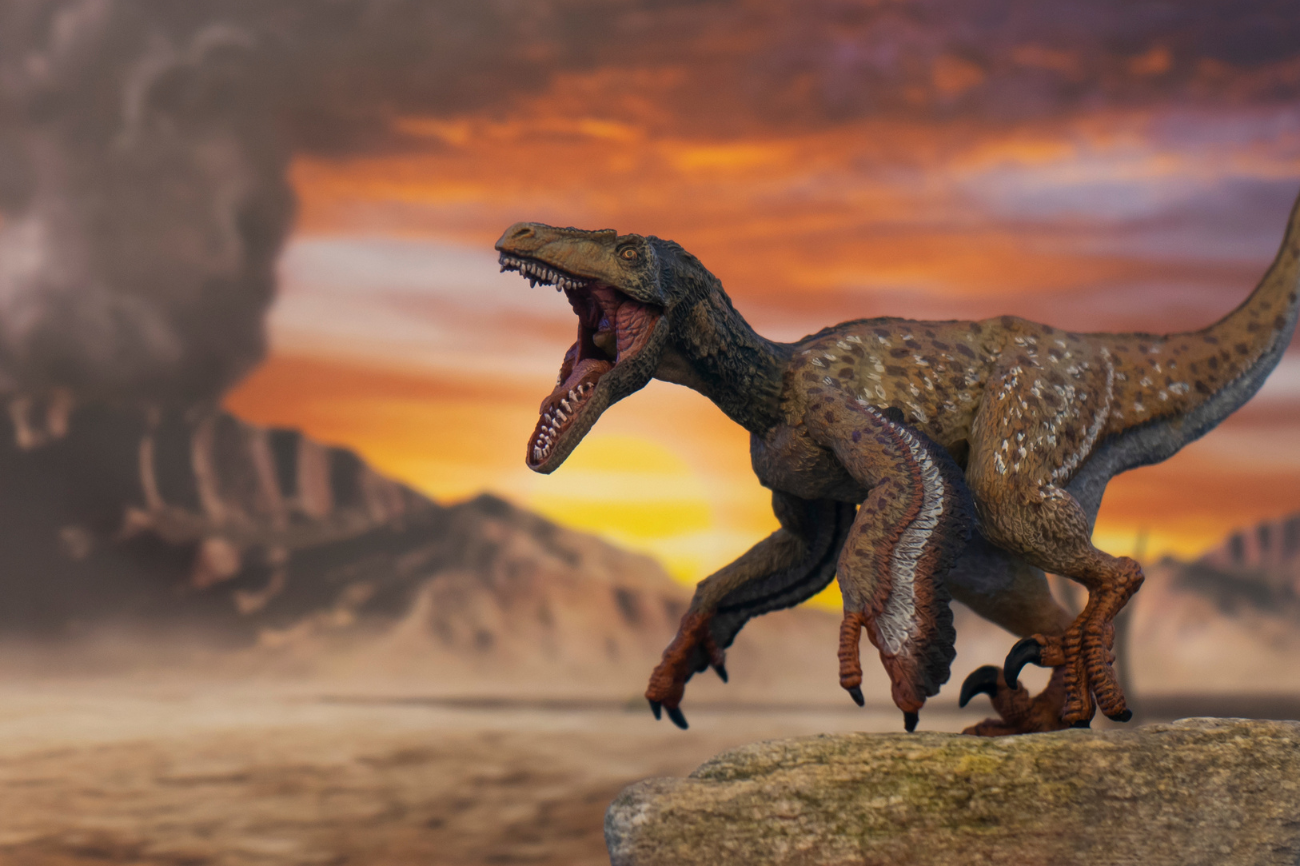
If you encounter a velociraptor, you won’t encounter the tall, sleek, lizard-like beast from the hit Jurassic Park franchise. Instead, you’ll probably stand up against a much smaller, feathered and colorful creature. In the past few decades, scientists have learned a lot about what dinosaurs looked like—and it’s changing long-held beliefs.
Did dinosaurs have feathers?
One of the biggest recent changes, says Paul Barrett, a researcher at the Natural History Museum in London, concerns the plumage of species such as Velociraptor.
“We now know from many fossils, particularly from China, that Velociraptor’s relatives, and subsequently Velociraptor itself, were feathered,” says Barrett. “They had very long, bird-like feathers on the forearms and downy feathers covering most of the rest of the body.”
The variety of plumage of these carnivores is great. Caudipteryxa small early Cretaceous theropod, there was a fan full of feathers.
Meanwhile, researchers believe that Caihong — from the Jurassic period — probably had shiny, iridescent feathers, probably not too different from what we see on hummingbirds today, says Sarah Davis, a postdoctoral researcher at the University of Texas.
Read more: This dinosaur fossil has intact skin – that’s why it’s important
Colorful dinosaurs
Thanks to some well-preserved fossil finds and new research techniques, dinosaurs are also known to have had all kinds of fleshy appendages. They are available in different colors.
In some cases, along with fossilized feathers, archaeologists have also found fossilized feathers melanosome structures, says Davis. “These are pigments that make browns, grays and blacks,” she explains, citing the example of Anchiorniswhich was mostly a black Jurassic dinosaur.
“This small, tiny, bird-like predatory dinosaur actually had wings. It had these fluffy tail feathers on its back legs, as well as a long tail that could spread,” Davis says. It also had white stripes running down its wings, she continued, and a brown crest on its head that it liked to use as a display or to communicate with others of its kind.
The Cretaceous period Psittacosaurus, as another example, it had broom-like bristles on its tail and a set of markings on its body; in 2016, these findings allowed researchers to reconstructs the species in exquisite detail.
Read more: These dinosaurs fought with their tails
Crested dinosaurs
As exciting as it is to see more clearly what dinosaurs actually looked like, researchers are more interested in what this tells us about dinosaurs’ possible behavior.
“For most of the 20th century, dinosaurs were seen as pretty boring, kind of lazy animals – not very intelligent and not showing a lot of behavior,” he says. “We now know that dinosaurs behaved in many ways similar to birds; they made their nests like birds, [and] they probably showed off a bit, using their feathers like birds.
A fossil from Canada revealed this Edmontosaurus — “a large, massive, quadrupedal animal,” according to Barrett — was provided with a fleshy crest on the top of its head, likened to that of a rooster. It is believed that the cap of this crested dinosaur was probably used as a “structure of sexual display“, say the researchers who made the discovery.
Dino-vision
In a relatively short period of time, our knowledge of what many dinosaurs looked like has expanded significantly. Both Barrett and Davis agree that these findings open the door to many other interesting questions.
“I’m really interested in how dinosaurs can actually perceive color,” Davis says. “We know that birds in particular can see a wider range of colors than many animals, and this affects how they can use colors for display.”
Whether these feathery displays and skin pigmentation lend themselves to species-specific dinosaur vision is a question she hopes to one day solve. “Are we getting the surface level of what dinosaurs looked like? And did they really look completely different to each other?” Davis continues.
While new discoveries often depend on finding a lucky, spectacularly preserved fossil specimen or developing new technologies, Barrett believes a more detailed understanding of what dinosaurs looked like is on the horizon.
“Just throughout my career, I’ve seen some really big changes that I don’t think my predecessors would have thought would ever happen,” he says. “The pace of this change is increasing.”
Read more: A small theropod’s night vision and superior hearing suggest it was a moonlight predator

